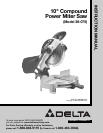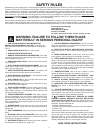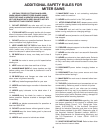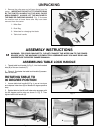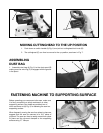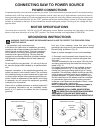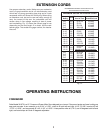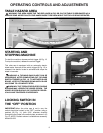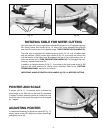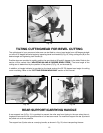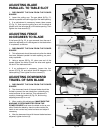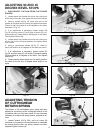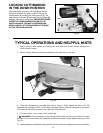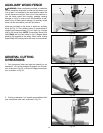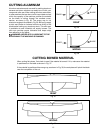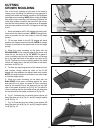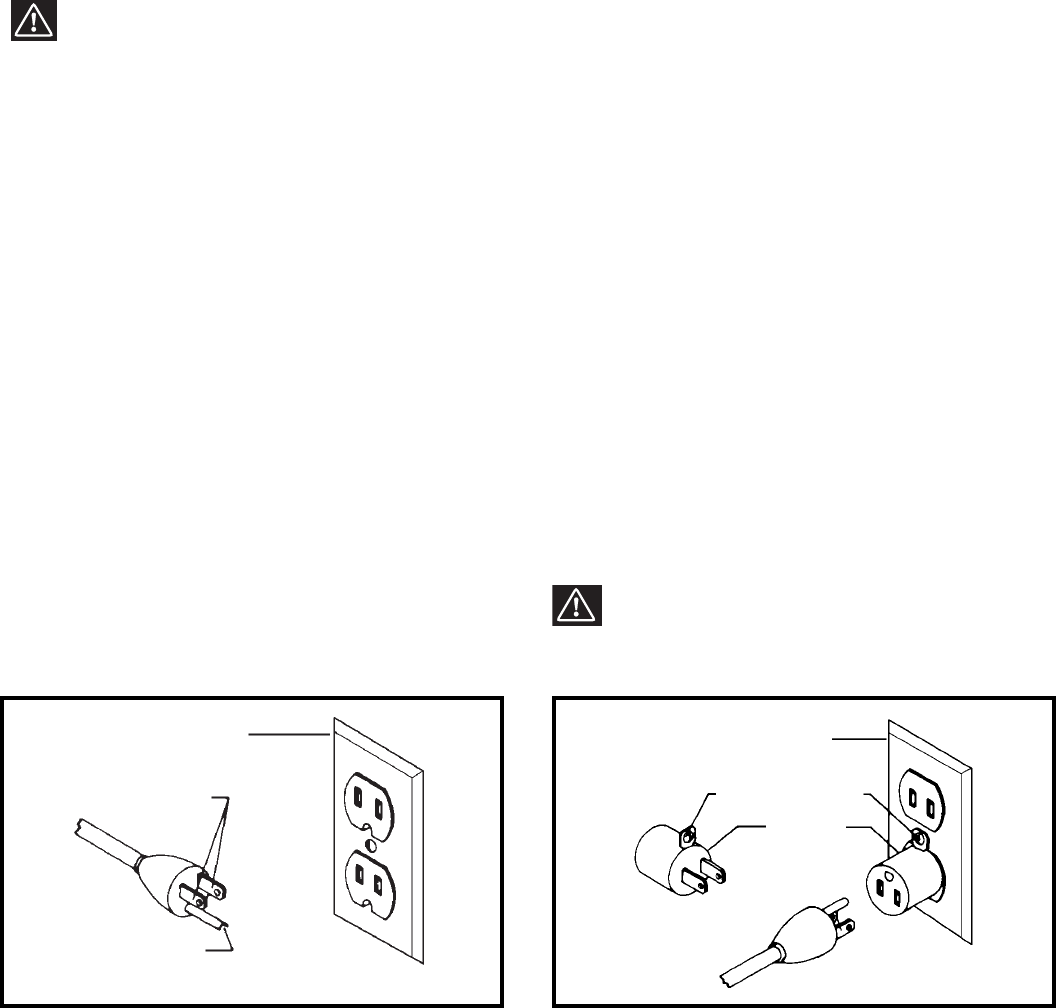
6
CONNECTING SAW TO POWER SOURCE
POWER CONNECTIONS
A separate electrical circuit should be used for your tools. This circuit should not be less than #12 wire and should be
protected with a 20 Amp time lag fuse. If an extension cord is used, use only 3-wire extension cords which have 3-
prong grounding type plugs and 3-pole receptacles which accept the tool’s plug. Before connecting the motor to the
power line, make sure the switch is in the “OFF” position and be sure that the electric current is of the same charac-
teristics as indicated on the tool. All line connections should make good contact. Running on low voltage will dam-
age the motor.
MOTOR SPECIFICATIONS
Your miter saw is wired for 110-120 volt, 60 HZ alternating current. Before connecting the miter saw to the power
source, make sure the switch is in the “OFF” position. The motor provides a no-load speed of 5200 RPM.
GROUNDING INSTRUCTIONS
WARNING: THIS TOOL MUST BE GROUNDED WHILE IN USE TO PROTECT THE OPERATOR FROM
ELECTRIC SHOCK.
Fig. 10 Fig. 11
GROUNDED OUTLET BOX
CURRENT
CARRYING
PRONGS
GROUNDING BLADE
IS LONGEST OF THE 3 BLADES
GROUNDED OUTLET BOX
GROUNDING
MEANS
ADAPTER
2. Grounded, cord-connected tools intended for use
on a supply circuit having a nominal rating less than
150 volts:
This tool is intended for use on a normal 120-volt circuit
and has a grounded plug that looks like the plug illus-
trated in Fig. 10.
If a properly grounded outlet is not available, a tempo-
rary adapter, shown in Fig. 11, may be used for con-
necting the 3-prong grounding type plug to a 2-prong
receptacle. The temporary adapter should be used only
until a properly grounded outlet can be installed by a
qualified electrician. The green colored rigid ear, lug, or
the like extending from the adapter must be connected
to a permanent ground such as a properly grounded
outlet box cover. Whenever the adapter is used, it must
be held in place with a metal screw.
NOTE: In Canada, the use of a temporary adapter is
not permitted by the Canadian Electric Code.
WARNING: IN ALL CASES, MAKE CERTAIN
THE RECEPTACLE IN QUESTION IS PROPERLY
GROUNDED. IF YOU ARE NOT SURE HAVE A
CERTIFIED ELECTRICIAN CHECK THE RECEPTACLE.
1. All grounded, cord-connected tools:
In the event of a malfunction or breakdown, grounding
provides a path of least resistance for electric current to
reduce the risk of electric shock. This tool is equipped
with an electric cord having an equipment-grounding
conductor and a grounding plug. The plug must be
plugged into a matching outlet that is properly installed
and grounded in accordance with all local codes and
ordinances.
Do not modify the plug provided - if it will not fit the out-
let, have the proper outlet installed by a qualified electri-
cian.
Improper connection of the equipment-grounding con-
ductor can result in risk of electric shock. The conductor
with insulation having an outer surface that is green with
or without yellow stripes is the equipment-grounding con-
ductor. If repair or replacement of the electric cord or plug
is necessary, do not connect the equipment grounding
conductor to a live terminal.
Check with a qualified electrician or service personnel if
the grounding instructions are not completely under-
stood, or if in doubt as to whether the tool is properly
grounded.
Use only 3-wire extension cords that have 3-prong
grounding type plugs and 3-hole receptacles that accept
the tool’s plug, as shown in Fig. 10.
Repair or replace damaged or worn cord immediately.



